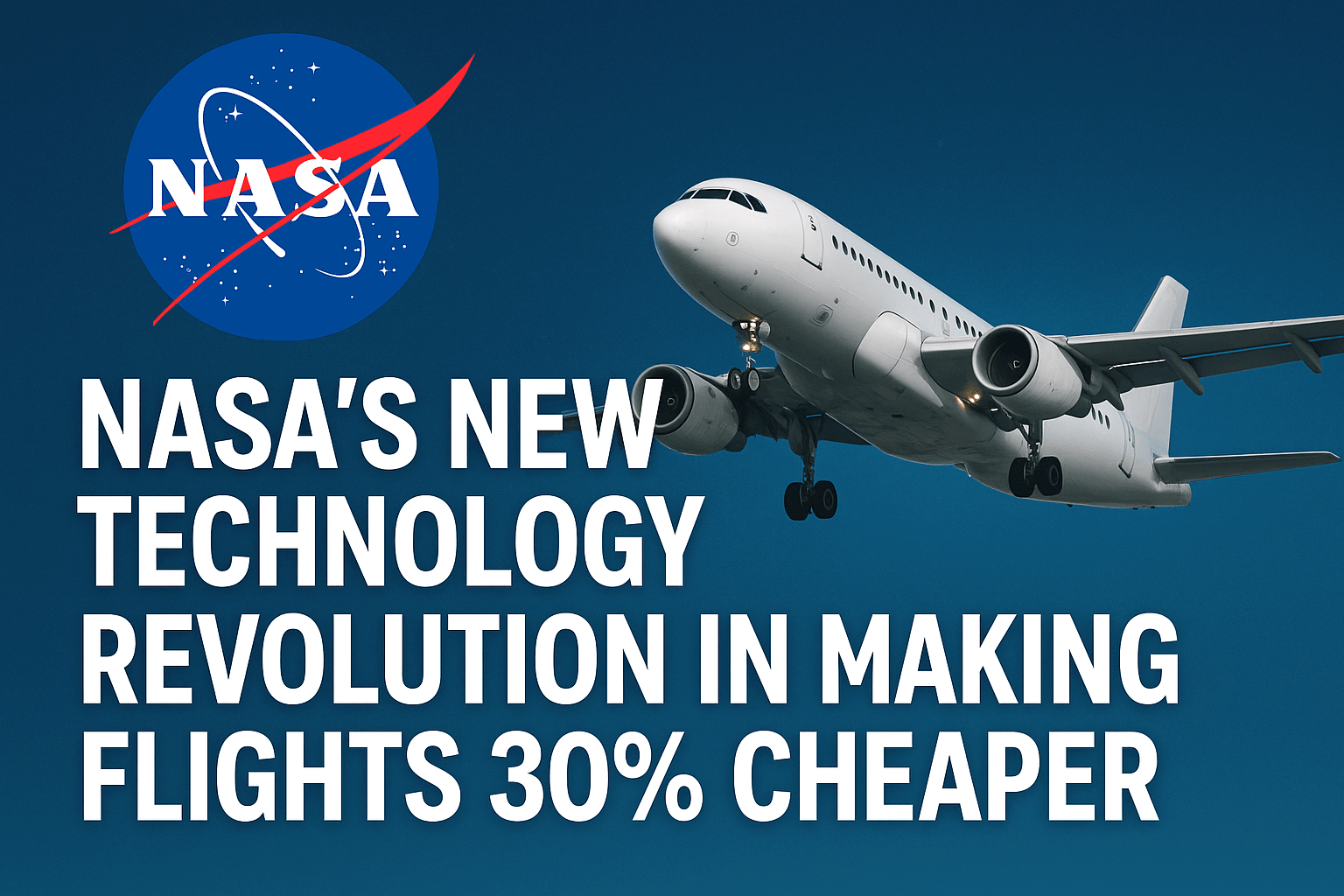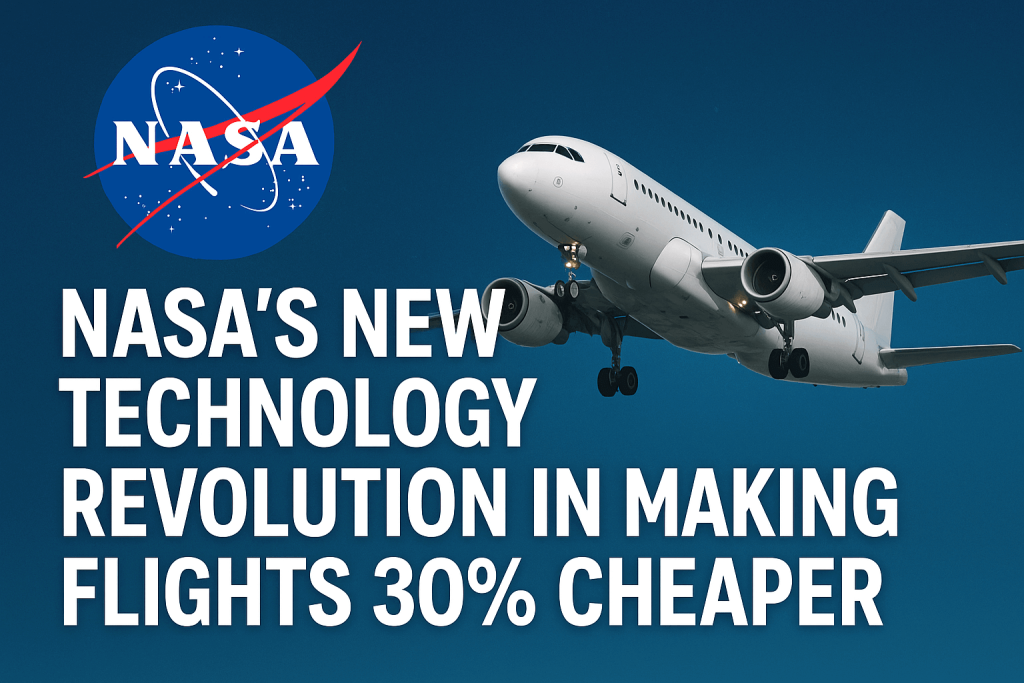
How Is NASA Transforming Flight Technology?
NASA’s New Technology Revolution: In 2023 NASA Administrator Bill Nelson has announced that by 2028 NASA will design a revolutionary airplane to reduce as much as 30% the fuel consumption with better engines. This airplane will reduce the cost of entire air travel by about 30 times with a simple Jig Technology. He said that this airplane would be so fuel efficient that the American airline industry will save at least $45,000 of fuel for every flight. All this only because the US
government wants to re-establish its monopoly in the airline industry and in this mission it knows that only NASA can help US government.
government wants to re-establish its monopoly in the airline industry and in this mission it knows that only NASA can help US government.
Actually back in year 1970 when the entire airline industry was ruled by the US company Boeing, which took the US economy to different heights along with humans but as if this thing was not known to European countries. When the US came to know about this, they started to form a union to challenge the monopoly of the US. This union consisted of France, Spain, Germany and Britain. These four European countries together launched a strong contender in the market. The name of this contender was Airbus. Now on one side there was Boeing which was being supported by the US government alone while on the other side there was Airbus which was being run by four countries together. As soon as Airbus entered in this industry and within just 10 years it snatched the crown from Boeing.
How did the 1992 agreement between the US and Europe on large civil aircraft aim to resolve the trade dispute over subsidies to Airbus and American manufacturers?
Everyone knows that in the early 90s it had divided the entire USSR into states but still It did not leave Russia alone. It formed a new organization with Russian neighboring countries by the name of NATO. So as soon as the US came to know that Europe has become number one in the airline industry it charged the European government giving unfair support to Airbus. Now in such a situation, Europe also responded to this.
They also charged the same allegations against the US but then they realized that both of them were losing money. It would be wiser to settle the matter and as a result they took a break on this fight and signed a mutual agreement on large civil aircraft in 1992 and set some conditions on each other like both the governments will give a fixed subsidy to their airliners. If they ever have to compete (in something else) in future then they will create a level playing field for this matter.
Air drag discovery in aviation history
Unfortunately where on one hand the US was following this agreement honestly on the other hand our European countries still giving unfair support to Airbus. As soon as the US came to know about this it filed a direct case against Europe in the World Trade Organization. WTO set up an investigation committee on this whole matter and found out that US was correct. European governments were actually giving loans to Airbus on which it did not have to pay any interest. US took this matter to its own attention. To support Boeing, it directly sent its trump card to NASA. What happened was that NASA combined Boeing’s and its own technological expertise and funds and designed a plane in front of the world which can give 30x more mileage than any plane made till date. Whenever there has been an attempt to make planes we always used to ignore air drag until the first flying experiments in the year 1891. In those days when these experiments were started the aeronautics first came to know that there is a problem while flying and that is air drag.
Who were the Otto Lilienthal, The Flying Man, Samuel Langley and Wright Brothers and what was their contribution in designing Aircraft?
For a long time there was no one able to understand how to reduce it. But then a solution came from the German aerator Otto Lilienthal whom everyone knows today as The Flying Man. Actually Otto Lilienthal made different wings and did experiments on them. In these experiments, he noticed that the drag was having some effect on the lift of the wings. That is why he studied this drag in detail and gave us the relation between the two by plotting this complicated graph of drag versus lift. But this was not enough. There was still something missing and that is why a few years later, an American aerator Samuel Langley discovered through his experiments that by lengthening the wings, the drag on them is reduced to a great extent and further using the funds of these two aerators, on 17 December 1903 Wright Brothers made the world’s first controlled flight and opened the doors of air travel for us forever.
But the plane of the Wright Brothers was a bare bone structure through which air could flow very easily. But this structure was not right for large passenger jets. 17 years after the flight of the Wright Brothers this Handley Page Plane based on their design literally crashed while take off. When this accident was investigated it was found that due to excessive air drag on its wings the plane could not gain altitude. Those engineers believed that the lift of a plane should be straight upwards. But with the passage of time we came to know that actually the air flowing from above and below the wings put pressure on its tip and bends it due to which the lift instead of being straight it bends backwards i.e. the components of this lift act not only upwards but also backwards and this backward acting component is called induced drag by engineers. This drag is necessary to some extent but if it increases to a large extent it can also cause an accident of the plane. Because if the pilot folds the wings more sharply for more lift then the induced drag applying on it will oppose the lift of the wings and due to this the plane will crash instead of going up as it happened with that Handley Page plane.
Aircraft Wing Design: From Past to Future
1. The Drag Problem
- Older planes had large wings, causing more parasitic drag (from air friction) and induced drag (from lift).
- Engineers had to tackle both to improve speed and efficiency.
2. Early Solutions
- Longer wings reduced induced drag by minimizing wingtip vortices.
- Pear-shaped fronts reduced parasitic drag by allowing smoother airflow with less friction.
3. Aspect Ratio Concept
- Engineers introduced the aspect ratio (wing length ÷ wing width).
- Ideal ratio: up to 9 for efficient fuel use in commercial aircraft.
4. NASA’s New Design
NASA and Boeing developed the Transonic Truss-Braced Wing:
- Aspect ratio 1.5× higher than usual
- Uses carbon fiber (light and strong)
- Winglets with toe angle to generate extra lift and reduce drag
5. Efficiency & Cost Savings
- 30% fuel savings (10% from wings, 20% from sustainable engines)
- Saves ~$45,000 per 10-hour flight
NASA’s New Technology Revolution gives Boeing a major edge in efficiency and economics over competitors like Airbus.
